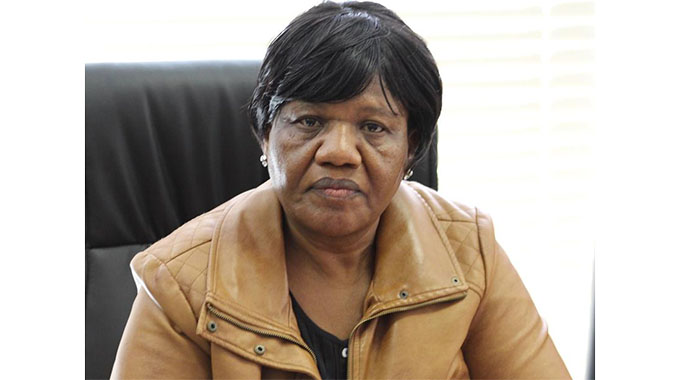Editorial Comment: Council should do more to fix suburban roads

The decision by Government to capitalise CMED so that it can build up a fleet of road making and road maintenance equipment is timely and will ensure that the present policy of largely relying on contractors can be extended to having the Department of Roads doing its own work.
On Monday, Minister of Transport and Infrastructure Development Felix Mhona commissioned a reasonable batch of equipment needed: two road reclaimers, two bulldozers, four large water bowsers, two 20-tonne recovery trucks, three excavators, four graders, a double-drum roller, three Padfoot rollers, three pneumatic rollers, two chip spreaders, one front-end loader, four 10-tonne trucks, and a tractor horse.
The range of equipment shows just what is needed when it comes to building, rebuilding or maintaining roads. The engineering goes far beyond levelling the ground and shoving some tar on top, requiring the whole roadbed to be built up in several layers of different types of material to handle the traffic.
The seal coat is just there to stop these layers being eroded away and to keep the top layer of small stone secure.
A chunk of this fleet is being assigned to urban roads, where councils have failed miserably over the last two decades to do very much, and some of what they have done has been very second rate, or third rate, and needs to be redone within a couple of years.
As Minister Mhona noted, legally municipalities are supposed to build and maintain their own roads, using their own financing although perhaps with a Government grant when a particular city road is also part of a national highway, and so the Government pays for say half.
That worked well for a century, and most town and city councils saw road building and maintenance as one of their primary responsibilities, along with sewage works, water supply and garbage removal.
This was why they were set up and why they were supported by residents through rates and other charges.
The fact that the new policy and new equipment is being activated for Alpes Road in northern Harare, where the minister commissioned the equipment, highlights many of the failures of Harare City Council.
It was, and is not, much a problem of finance. Harare City Council used to collect licence fees for vehicles registered in the city, as did its constituent town councils even earlier.
When Zinara was set up, with a single national licence rate that stopped car owners faking their address so as to register in a nearby rural area with lower licence fees, Harare instead received grants from Zinara, roughly in proportion to its percentage of the national vehicle fleet.
Admittedly there was a problem at one time with Zinara and corruption, but the Second Republic fixed that with new management and a new board, plus some intense tightening up.
Zinara publishes its quarterly disbursements to all local authorities, and makes it clear that all then have to simply use the money for road works, and send the accounts to Zinara.
It has noted that Harare is one of the frequent delayers, and this in turn delays the next chunk of money due to the city. Better administration would result in better flow of funds.
In the end, the Government decided to move into municipal areas. Declaring urban roads a state of disaster, an accurate as well as legal description, gave the Government the legal right to intervene and start rebuilding and fixing urban roads.
Alpes Road is fairly typical of the sort of mess that can arise. Originally it was three separate bits of road, reflected to this day in the three names it has over different sections.
There was a suburban road, built rather well by the then Salisbury Municipality. There was a short section of suburban road built further north by the Mount Pleasant Town Management Board, and then there was a rural farm road.
In time, the bits were stitched together, but a lot of the original sections, and most of the new connecting bits, were built on heavy vlei clays. The road passes over the old, and largely drained wetland, known as the Gwebi Flats.
The initial construction was designed for low density suburbs, a few hundred light vehicles a day. Since then there has been a lot of major development along and near the road including high density housing, both working class and upmarket cluster housing, plus a lot of business development plus some industry and that would include the main dump site for the city.
Harare municipality did keep the road in reasonable repair until early this century, although the frequency of the repairs and their cost already justified a complete rebuild to the standards of a major highway.
But then almost nothing, so this is why the road has now reached the top of the Government list for Harare highway work.
The sad point is that the Government is having to step in and buy the equipment, or at least deploy this equipment into northern Harare.
The city council itself should have been doing the work, and buying a suitable fleet of equipment, as it did in its first century until twenty or so years ago.
The council did hire contractors for some work, and the results were patchy. For example the stretch of Arcturus Road between ED Mnangagwa Road and Harare Drive was redone at roughly the same time as the nearby Rhodesville Avenue.
The difference now is remarkable, with Rhodesville Avenue a maze of large potholes, so everyone wonders just how the contractor was chosen, and by whom.
So even when the city council spent the money it received from Zinara the spending was often deficient, or the money was spent most unwisely, or there was significant skimping.
This is the other reason why the Government had to step in. Either the money was not spent at all, or it was spent badly, and it is difficult to see what else a Government that actually does care about how urban people live could have done.
In other areas the Government has had to drill boreholes and install solar pumps. With a council doing its job those could have been drilled somewhere else, since the communities that need them would have water in the taps in their houses.
More and more the Government is forced to take over functions that should be pure municipal, simply because the city council cannot do the job. The fact that residents support the Government moving in shows just how badly the council has done.











Comments